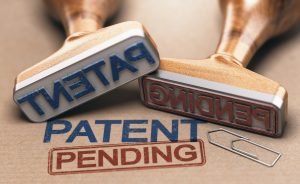Innovation Tax Incentives:
Three separate innovation tax incentive schemes are available to reward and incentivise a U.K. company that has spent time and money on innovation; the R&D SME scheme, RDEC (Research & Development Expenditure Credit scheme), and the Patent Box.
R&D tax relief
Currently, there are two R&D tax relief schemes in the U.K.; one for small and medium-sized enterprises (enterprises having a headcount of fewer than 500 employees and with either a turnover of no more than 100 million euros or balance sheet assets of no more than 86 million euros) called the R&D SME scheme and the other for large companies (or SMEs that can`t claim under the SME scheme) called RDEC.
The tax definition of R&D activity is the same across both the SME scheme and RDEC and requires project activity where the company aims to achieve an advance in a field of science or technology through the resolution of scientific or technical uncertainty.
The definition of R&D is deliberately broad as it is intended to apply to a company operating in any industry or sector. At one end of the spectrum, an R&D tax relief claim can be made by a scientific research organisation, and at the other end, a construction company encountering a serious technical design challenge.
What HMRC means by an advance in a field of science or technology is project activity where a company is involved in innovative activity, relevant to the trade of the company. The innovation will, of course, vary amongst companies depending on trade activity but the key ingredients of every R&D project are the same. Whatever the overall commercial project may involve, we need to identify (i) the company aiming to create new scientific or technical knowledge as the outcome of R&D activity (ii) the company identifying scientific or technical challenges and uncertainty in achieving their aim at the outset and during the R&D project (iii) the company not being able to easily devise a solution to the scientific or technical challenges having considered all available options (iv) the company devising a plan of steps to take to resolve the scientific or technical challenges that they`ve identified and (v) the company carrying out R&D activity- work to resolve the challenges and achieve a successful outcome.
It is possible to go back two years when claiming and a company must demonstrate R&D activity during each accounting period. The categories of qualifying expenditure are currently different between the R&D SME scheme and RDEC and the tax benefits are also different.
When the Labour Government introduced R&D tax credits in 2000, there was a very clear aim to incentivise business growth in the U.K. with greater support directed towards SMEs. Currently, a claim for SME R&D tax relief allows a company to deduct an extra 130% of their qualifying R&D expenditure from their yearly profit, as well as the normal 100% deduction, to make a total 230% deduction and claim a tax credit if the company is loss-making, worth up to 14.5% of the surrenderable loss. The benefit is worth up to 33p for every £1 spent on R&D.
A claim for RDEC works differently. A claiming company receives a tax credit equal to 13% of qualifying R&D expenditure. This credit is taxable at the normal corporation tax rate of 19% which means that the benefit is worth 11p for every £1 spent on R&D.
The financial benefit to a U.K. company of claiming R&D tax relief depends on the company`s individual tax position but includes:
- A reduction in the company`s current liability to pay corporation tax
- A corporation tax rebate
- A tax credit from HMRC
- The generation of losses to be offset against corporation tax paid for a prior period or due to be paid in the future
- HMRC setting off the R&D corporation tax savings against other taxes owed to HMRC
HMRC statistics for the year ended March 2020 state that the total support claimed through the R&D schemes is estimated to be £7.4 billion, an increase of 19% from the previous year. The financial support is split fairly evenly between schemes with £4.4 billion through the SME scheme and £3.1 billion from the RDEC scheme.
The new tax year brings a series of reforms that will alter the administration of claims for R&D tax relief as well as the tax benefits available to claiming companies. One of the most significant of the reforms will be a reduction in the percentage of qualifying R&D expenditure which an SME can deduct from yearly profit. The change applies to R&D expenditure incurred from 1 April 2023 onwards and the percentage is reduced from 130% to 86%. There is positive news for large companies, however. To reflect the fact that the Government considers that the RDEC scheme represents better value for money for the U.K. taxpayer, the credit will increase from 13% to 20%.
The reforms also bring changes to the way that R&D tax relief claims are made. In the future, claims will be made digitally and HMRC will expect claims to be approved by an officer of the company before submission. More information about the R&D projects undertaken will need to be provided together with information as to why it satisfies the qualifying criteria. More information will need to be provided about the R&D expenditure incurred and HMRC`s systems will be able to automatically detect and flag errors in maths and accounting.
There is no doubt that there are substantial reforms on the horizon for companies claiming R&D tax relief, however, the Conservative Government has underlined its commitment to supporting it going forward and it remains a valuable tax incentive.
Patent Box Tax Relief
Patent Box tax relief is an extremely valuable and often overlooked corporate tax relief for a U.K. company that has carried out R&D activity and decided to patent the result of the R&D activity. This tax relief was introduced in 2013 but has not received the same claimant numbers as R&D tax relief.
The latest HMRC statistics for Patent Box state that in the tax year 2019/2020, 1,395 companies claimed relief and the total value of the relief claimed was estimated to be £1,220 million.
There are several reasons for the lower uptake of companies claiming the Patent Box tax relief (concern about the cost of patenting, the complexity of the Patent Box calculations etc) but these cannot detract from the substantial corporation tax savings.
Qualifying companies that elect into the Patent Box pay 10% on qualifying IP profits rather than the main rate of corporation tax. Historically, claiming companies have been able to save almost 50% on a corporation tax liability but this saving will increase when the main rate of corporation tax rises to 25% in April 2023
One of the principal reasons why Patent Box tax relief is so underclaimed is concern about the cost of patenting. To be eligible, a company needs to either hold a granted patent or have an exclusive licence over a granted patent. Many companies consider patenting to be prohibitively expensive or not commercially advantageous and unfortunately, without a granted patent, claiming relief is not possible.
Many companies do not know that it is unnecessary to apply for patents in multiple jurisdictions to avail themselves of the relief. All that is required is one U.K. patent and this can reduce patenting expenses enormously.
Depending on the nature and complexity of the patent application, it can be drafted, filed, and prosecuted in as little as two to five years with the cost, on average, being £5,000 plus disbursements. Many companies forget also that the lifespan of a typical patent is twenty years. Concern about the amount of upfront patenting costs is often alleviated when a company realises that substantial corporation tax savings can be achieved over a long period.
Similar to claims for R&D tax relief, there are additional qualifying criteria that a company has to satisfy for a company to claim Patent Box tax relief. The relief is not available to passive IP holding companies. This means that for a company to claim, it must have created or contributed towards the patented invention or carried out R&D activity to develop the patented invention further or ways in which the patented invention can be used or applied, if it has acquired the patent later.
If the company is a member of a group, it must satisfy the active ownership requirement; either carry out qualifying development itself or if another member of the group has done this, demonstrate active ownership in other ways.
The Patent Box legislation prescribes five heads of relevant IP income which attract the relief. These are (1) sales income from the sales of patented products, products incorporating qualifying patents, or products designed to be incorporated within patented products or other products incorporating qualifying patents (2) sales income from the sales of the qualifying IP itself (3) licence fees and/or royalties (4) damages for qualifying IP infringement and (5) other compensation. In addition to the five heads, the legislation allows a company to treat any other type of income which arises from the exploitation of qualifying IP as relevant income for the Patent Box, if it doesn`t fall within one of the five heads of qualifying IP income.
Head 1 of relevant IP income- sales income from the sales of patented products etc is great news to manufacturing companies as it allows income from not only the sales of patented products to be treated as relevant IP income but also sales income from selling products that contain one or patented components as well as sales income from selling products designed to be incorporated within patented products or products containing patented components. Further, the sales income can be achieved anywhere in the world, not just in the U.K. although the income must be included within the profit and loss account of the claiming U.K. company.
There will be many instances where a manufacturer is making a product that contains one or more patented components and it is good to know that the overall sales income from selling the larger product can be included within the Patent Box calculations. In addition, it is not well known that sales income from selling accessories that have been designed to be used with patented products can also be treated as relevant IP income.
The types of companies that have claimed Patent Box tax relief to date have typically been the large, technology-driven public limited companies in the U.K. however it is widely expected that the number of companies claiming will increase on account of the rise in the main rate of corporation tax payable in April 2023.
Selling IP rights
It is normal for R&D-intensive businesses to spend a lot of money patenting the results of their inventions, particularly when they have overseas markets to protect however in business, things can change. A company can find itself in a situation where they decide to no longer manufacture a patented product because, for example, technology has moved on and sales of the product have waned. Perhaps the direction of the business has changed and the company decides to allow patents in certain jurisdictions to lapse or the product itself has changed and the patent is no longer relevant. Situations can arise where a company owns a portfolio of patents and over time, the patents owned serve no commercial purpose for the business.
For those businesses who recognise the value of their IP, they may decide not to pay the renewal fees of a patent it no longer wants to keep and to allow the patent to lapse.
As stated above, if a company sells a qualifying IP right, the sales income arising is relevant IP income for the Patent Box but taking this a step back, many companies think only about the financial savings that can be achieved by no longer paying patent renewal fees and the potential sales income that can be achieved from selling the redundant IP rights themselves, is often overlooked.
This is where the need for professional IP audits comes in, to ascertain what is commercially useful and what isn’t and to ask whether there are any redundant IP rights that could be sold. Not all companies regularly review what it owns but it`s essential, worth the cost of employing a professional, and another way of yielding a financial return on R&D activity.
Patenting
As previously stated, patenting the results of R&D is essential if a company wants to claim Patent Box tax relief. However, many companies do not realise that the act of patenting, for its own sake, creates commercial value in a company, essential to potential investors.
A company is valuable because the legal right conferred by the patent provides commercial protection over a patented invention in a specific market. This is a vital consideration for any investor considering investing money in a business.
In addition, IP rights can be bought and sold and licenses granted, creating the possibility of additional income.
Licensing income and/or royalties
The technical or scientific know-how created by a company carrying out R&D activity can be a licensable intellectual property, of value to other businesses that may need it to carry out their own R&D activity. Know-how includes confidential information used by a business, a scientific or technical method, a formulation, a trade secret, or product. Know-how is often an overlooked source of revenue for a business owner.
A company owning patents can enter into licensing agreements with third parties that grant specific rights (exclusive or non-exclusive) to use some or all of the rights contained in the patent in return for a license fee. In addition, royalties (a percentage paid to the licensor of income received by the licensee) can also be negotiated.
Licensing over patent rights is common but companies sometimes forget that licensing deals, producing licensing income and royalties, are also relevant to other types of IP, such as know-how and possibly trade secrets. Know-how can be licensed on its own or with other types of IP and companies sometimes consider licensing know-how as part of a consulting agreement where the licensor`s expertise is provided along with the know-how.
For R&D-intensive businesses that create scientific or technological know-how but who don`t want to commercialise it, license agreements can be an extremely lucrative source of revenue.








